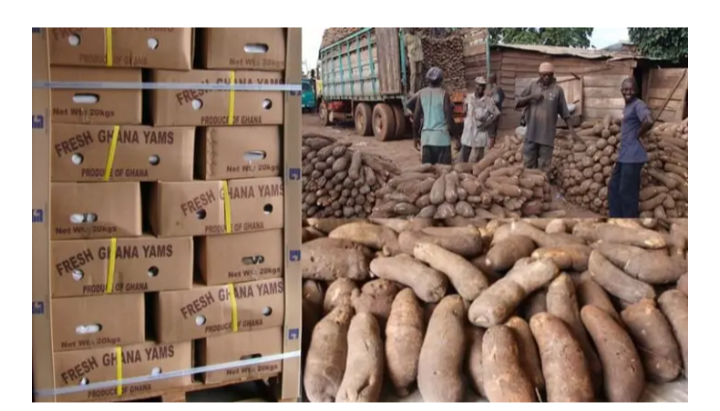
Ghana’s economic potentials appear boundless. She is now the world’s leading exporter of yam, having overtaken the frontrunner, Costa Rica, in 2021.
Exports of yam tubers reached a record high of US$48million last year, according to data from the Ghana Export Promotion Authority (GEPA) – making the country the world’s largest exporter of yam.
The country now controls 24 per cent of the US$200million global export market, growing its export value from US$38.5million in 2018 to US$48.2million in 2021.
GEPA said exports grew at an annual rate of 14 per cent from 2020-2021 and an average of 9 per cent between 2017 and 2021.
Ghana’s yam-producing areas such as Ahafo, Bono, Bono East and Oti regions enjoyed massive support under the government’s planting for food and jobs programme. A plank of the investment is agricultural extension services which have been churning new strategies for farmers.
Two key institutions that fend the Ghana project are the West Africa Centre for Crop Improvement (WACCI) based at the University of Ghana and the Council for Scientific and Industrial Research (CSIR). Researchers have been promoting yam in terms of commercial production for export and enhanced product quality for competitive exports.
To this end, the genetic make-up of yam varieties are constantly being examined by WACCI and CSIR for greater hybridisation benchmarked on bio-fortification, resilience to climatic changes and long shelf life.
Top Yam breeder of the CSIR Crop Research Institute in Kumasi, Prof Emmanuel Otoo says, the yam project is supported by the Bill and Melinda Gates Fund and directed at regional food security through production centres with comparative advantages.
Prof. Otoo suggested more investment in agricultural research, pointing to aeroponic systems as one of the greatest interventions ever to be made by scientists. Calling it plantations hanging in the air, aeroponics is a soilless means by which plants are cultivated. The planting media are housing for cultivars fed with nutrient water. It is a system which allows plants to be identified by their DNA using molecular markers, thus international markets and consumers can trace the sources of the produce.
Aeroponics and hydroponics are both methods of growing food without soil. Historically, hydroponics has been more commonly used for irrigation both in commercial and domestic setups, since aeroponics involves much newer technology and greater expertise. Both systems provide the nutrients usually accessed by the plant through soil by adding them to a water solution – how this solution is delivered to the plant roots is where the two systems differ.
Aeroponic systems can be far more profitable due to their higher productivity speeding up your growth cycles: faster growth reduces your labour and energy consumption per kg, therefore is financially more efficient. However, both aeroponic and hydroponic systems require business modeling to ensure the crops you are intending to grow are economically viable within your market.
A PhD student of WACCI Prince Emmanuel Norman, in his Genetic Analysis Of Tuber Yield And Quality Traits In White Yam, notes that genetic improvement of yam with high tuber yield, high dry matter content, starch and other food quality attributes using traditional and modern breeding techniques will contribute to sustainable food production.
Nigeria is reported to produce more yam than any country but is absorbed by the domestic market, and that leaves Ghana’s exports as leading the global share.
The United States and China are some of the largest markets for yam. In addition to Costa Rica, Ghana’s key competitors in exports are Jamaica, Colombia and Brazil.
















